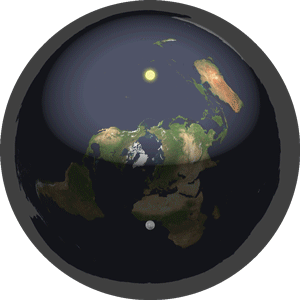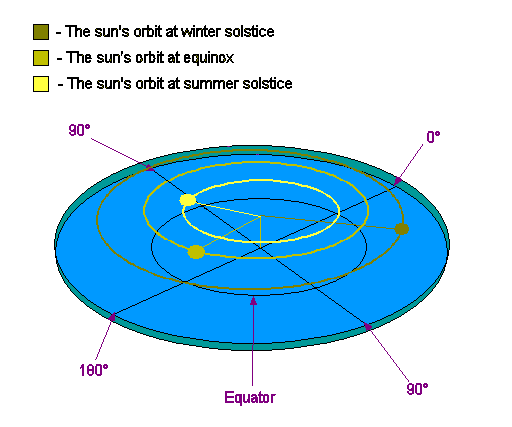What Is The Coriolis Effect?
Lets start with a simple yet straightforward definition of what the Coriolis is, given by the spherists themselves:
The Coriolis effect is the apparent curvature of global winds, ocean currents, and everything else that moves freely across the Earth's surface. The curvature is due to the rotation of the Earth on its axis.http://www.universetoday.com/73828/what-is-the-coriolis-effect/
But What is It Really?
Round Earth believers tend to assume that any natural phenomenon which cannot be attributed to immediately observable causes, must therefore be caused by the roundness of the earth. Like the intellectual fallacy of God-of-the-Gaps, spherists use roundness as an explanation that quite literally fills the obvious gaps undermining their their own belief system.
But what does this have to do with the Coriolis Effect?
Good question. The Coriolis Effect, like so many dynamic and obviously real natural phenomenon, has become lost in the explanatory haze of round earth thought. It is nothing more than another victim of "explanation" within the indomitable corpus of round earth "facts". Specifically, because it is considered "fact" the Coriolis Effect quickly becomes an inconsequential piece of information to be memorized, rather than understood. That is the tragedy of mainstream science: the world is alive and active, ripe for discovery; but because people believe that the causes of those phenomena have already been discovered, they let their passion for knowledge fade away in the dull memorization of facts. This is why it matters how spherists think, and how it impacts what is known regarding the Coriolis Effect.
A Flat Earth Explanation of A Round Earth "Fact".
Coriolis is a real Effect. The earth is actually Flat. While mainstream science will claim that the two are mutually exclusive, Flat Earth Theory finds dynamic explanations where "science" in its infinite wisdom would never look. For example, Universal Acceleration is a powerful and pervasive cosmic force that powers the upward movement of the Flat earth through space, causing what spherical call "gravitation". While the exact nature of this force is not fully understood, it is likely magnetic in nature. In this way it not only surrounds the disk of the earth, it also moves through it. The action of such an extensive force would powerfully impact the motion of the winds and other fluid currents on earth's surface. It is well know that atmospheric particles contain an electrical charge:
Coriolis is a real Effect. The earth is actually Flat. While mainstream science will claim that the two are mutually exclusive, Flat Earth Theory finds dynamic explanations where "science" in its infinite wisdom would never look. For example, Universal Acceleration is a powerful and pervasive cosmic force that powers the upward movement of the Flat earth through space, causing what spherical call "gravitation". While the exact nature of this force is not fully understood, it is likely magnetic in nature. In this way it not only surrounds the disk of the earth, it also moves through it. The action of such an extensive force would powerfully impact the motion of the winds and other fluid currents on earth's surface. It is well know that atmospheric particles contain an electrical charge:
Given the magnetic force of the UA (Universal Accelerator), it would not be surprising if air currents as well as ocean currents are dynamically driven by this unseen force. A differential in magnetic forces between Earth's northern and southern regions would explain the rotational differences between north and south. In light of this, the Coriolis Effect can be seen to have an equally valid (and more compelling) explanation in Flat Earth Theory. However, Universal Acceleration is only one of many possible explanations. Phenomena such as Planetary Wobble (responsible for tidal patters) likely play an important role as well...
These and other explanations clearly show how the explanatory power of Flat Earth Theory easily rivals that of mainstream science. One hides behind its own methodology, the other confidently searches for new answers to old questions. FET advances knowledge where science only seeks to accumulate it.













